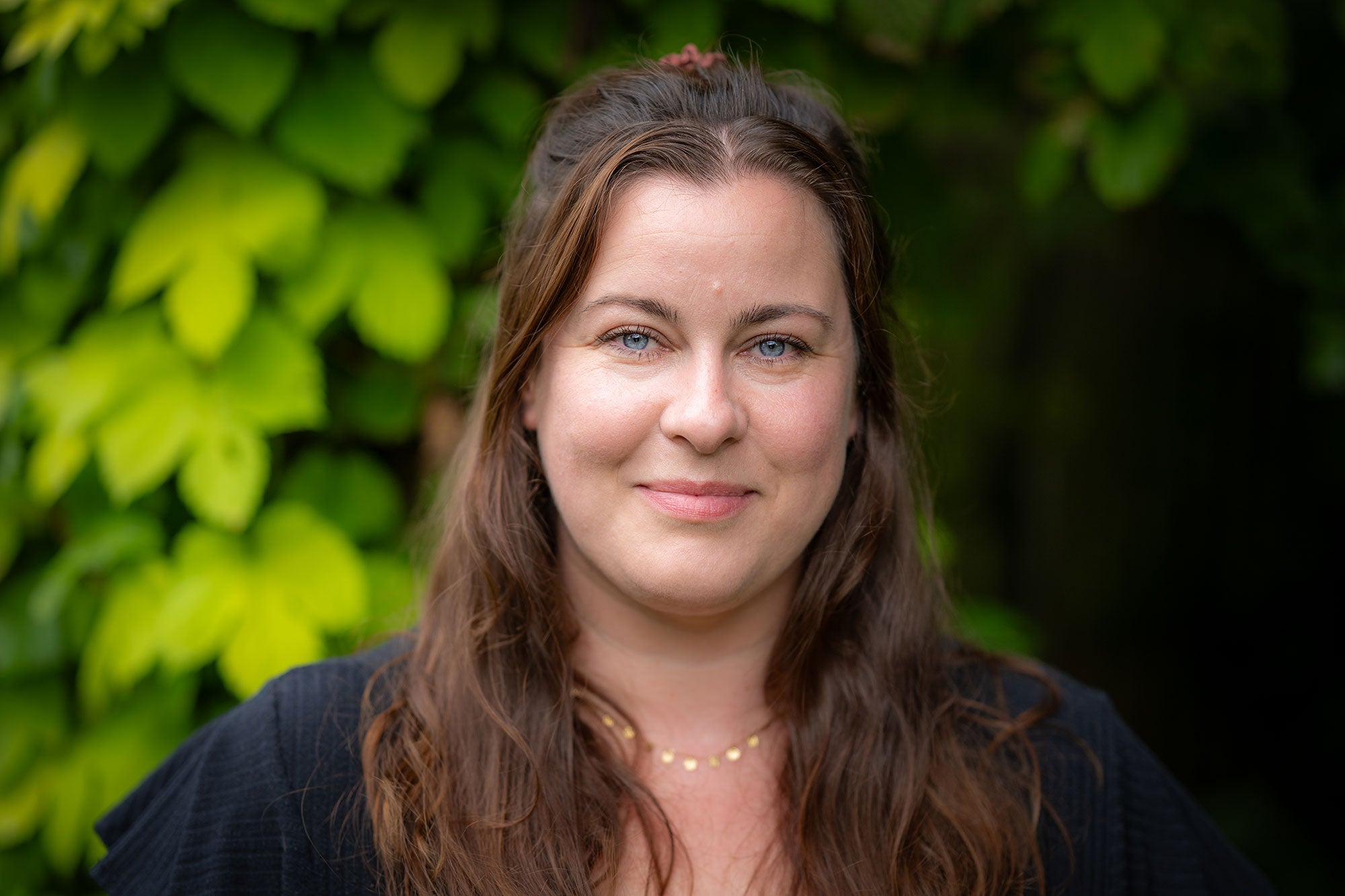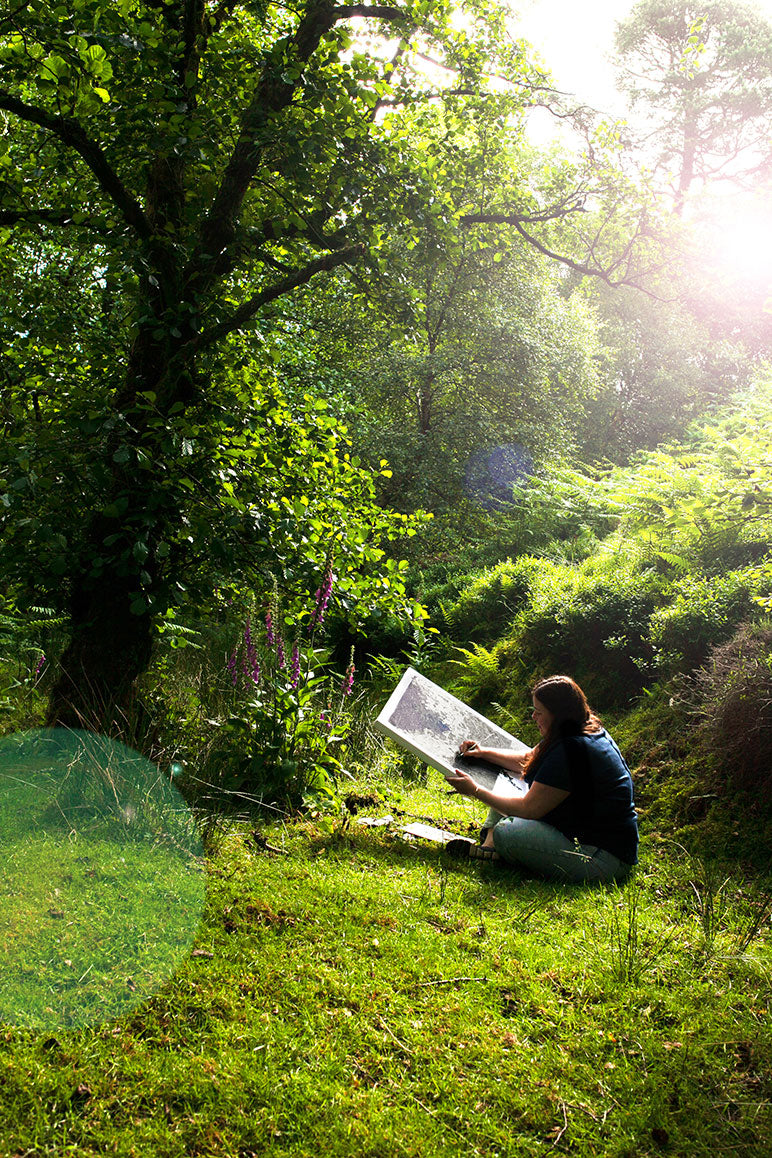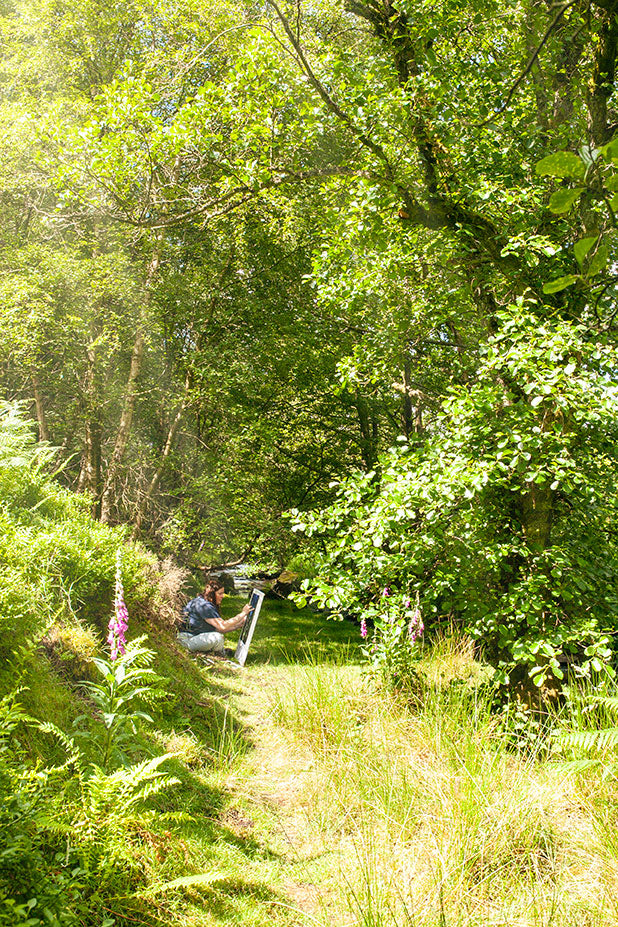
About Me
Hi! I’m Lindsey Groves, an artist based in North Yorkshire, and I’ve always been a creator of some kind - experimenting and evolving through various different mediums over several years.
-
My background in art
As a teenager, I went to Cleveland College of Art, where I quickly fell in love with the process of drawing, particularly life drawing.
Then, I studied Fine Art at Northumbria University, specialising in printmaking and continuing to experiment with the process of mark-making and drawing.
My work evolved into the notion of space through various different mediums - from hardground etching and photolithography to dioramas and installation specific art. Big spaces, small intimate spaces, negative space - it didn’t matter: I was enthralled.
Drawing on inspiration from a number of sources such as On Longing by Susan Stewart, The Poetics of Space by Gaston Bachelard, Rachel Whiteread’s work on negative space, and Do-Ho Suh’s staggering structures, I was always interested in space in some way. I also loved Thomas Demand’s works. He often looks at seemingly mundane spaces and how we use them or exist in them.
After completing my degree, I worked for the University as a graduate fellow and taught a wide variety of techniques before studying for teacher training in Design Technology at Sunderland University.
-

Me in the present
In 2017, I became a mother, and went back to teaching after maternity leave. Following the Covid pandemic, I turned to painting; printmaking studios were closed and painting was a lot more accessible, being able to do it in my home studio space.
Success, to me, is being content with everything rather than trying to improve everything - being content and calm, and happy in the moment. So, I’ve now begun painting as a business, combining my love of art and the time and peace the process eventually brings me with providing something others can enjoy as well.

Why do I create?
An artist’s only true talent is the desire to create. I’ve always had that, but only recently have I discovered my desire is because of curiosity. Always playing and experimenting, I’ve never really focused on one medium - just whichever medium suits the idea.
For me, in this very busy and frantic world of work, adulting and parenting, I truly value the process of creating the piece - the end result is a product of my journey and the ‘calm’ moments I’ve had in order to paint.
In its purest sense, it’s about liberation: I connect with a piece on a level that’s completely out of my control.
A blank canvas is just that. I have no plan. I don’t draw or sketch a composition - I start to add parts once the free-flowing ink has dried. It seems to tell you what to do. I’m not governed by the background as I use powdered ink and water: an entirely uncontrollable medium.
-
All the small things
When ‘real life’ took over, like paying bills and raising a child, creating dwindled for a while. Then, Covid happened: I found myself in an anxious state, but I now had time on my side. I had to be in my home studio painting because the only thing we were allowed to do at the time was go for one walk a day which meant I spent the time with my daughter - my God, we made the most of that walk.
I found myself showing her tiny bugs the way the light hits some dew. The patterns on the leaves. The beauty of nature. Suddenly, I was interested in the small details I would’ve walked past and never actually seen. People acknowledge these things but never actually see them) everyone’s far too busy.
Often, when I’m out for a walk or on a bike ride with my daughter I find myself looking at the dewy ferns and the moss and the roots at the side of the path, the layers of the greens and browns. The beautiful light coming through the fronds of foliage. The luscious ferns, so delicate when studied up close yet such a big, bold presence. Everything has its own ‘stage’ in my painting but it’s like they are fighting for attention and to be seen. Just like in nature anyway. They are all important and worthy, but they are all fighting for the light.
-
Finding my piece of quiet
When I paint I have to think about so many variables. Do I want to mix a small amount of white in this colour to make it creamy or am I leaving white out to make it more translucent? How will this plant be growing? What scale am I doing this? All these considerations, internal conversations I have with myself, mean I can’t have other things going on. Or, I have to choose to block them out so I can ‘meditate’ - in other words, paint. It’s this process that brings me peace and calm.
Starting a new piece is, for me, like starting a new relationship. By that, I mean you get to know that person, figure them out, learn about them. I do that when I’m learning about my painting. It’s a journey we go on together.
When I’m not with it, it’s always on my mind. I worry about how things were left. Would it go right the next time I’m there? If it went well, should I have done more or stayed for longer?
To be fully honest and vulnerable with you, I often feel quite lost. Going through life, I don’t really know what I want to do or who I want to be.
The only thing I’m absolutely certain of, is that creating makes me happy.
So, I keep going.

Composition at the core
I consider the composition extremely important. My work needs to have an authentic and natural flow, like it’s grown that way across the canvas. That’s why I start in ink and water, done automatically without any thought or consideration.
Initially, the background is totally free and unexpected. I then see what I can see, occasionally making a quick sketch, then mapping out large areas. And then I work in the layers, bit by bit, to build up the tones, depths and then the final details. Each stage is as important as the next.
Although I paint flowers in isolation, I weave elements together in a piece to celebrate all the small details. There’s often a sadness when you see plants that have gone past their best and are dying off for next year, so it’s important to me to encapsulate their beauty before that point.
There are moments in time I consider each plant and flower to be at its best. I try to capture the light hitting the flowers regardless of season and paint the flowers at their zenith - so my work isn’t botanically accurate. It doesn’t matter if it’s not realistic in terms of their natural cycle - if ivy won’t be out at the same time as irises, I don’t care. I just want my composition to be a celebration of the simplicity of the natural environment - something that could seem real in an ideal world.
The background being left free-flowing is important to me - what I don’t paint, you fill in the gaps and imagine more. Almost as though you’re invited into the piece to be part of that setting. Part of that calm. That’s something I really like about my work.
-
Conscious thinking and reflection
Flowers need some basics to grow and that’s all that I need to create work: the basics.
The oil, the canvas, the brushes. And the desire.
But also we only need the basics to be happy and content. We need to slow down in life and not forget about the actual important things. We get caught up in everything and our intentions are good… work hard in your job for a good wage and then you can have a good life - but then you lose the time and the energy of actually having a good life. And then, what’s it all for?
I paint to stop thinking.
So many decisions need to be made as you’re painting, the internal dialogue leaves no room for thoughts of anxiety and stress) When I’m painting I’m only thinking about what I’m doing.
It’s important that I immerse myself in the instantaneous decision-making. These choices all have to work together.
-
For example, the thickness will depend on how I want it to sit within the end result. Sometimes I like the brushstrokes to come through. Sometimes I want more delicate work and use a very thin wash of colour, where the light’s coming from.
Each individual flower or group of flowers needs to sit together harmoniously at the end. Although not perspectively accurate, I still want to convey the sense that this scene could exist, that the flower could grow like this naturally. Questions resound throughout. How can I make each individual part look realistic but not overwork it? How am I leaving some parts painterly and some parts realistic? How will this work in terms of its texture? Sometimes I want it to have a strong likeness. Sometimes I just like to offer a hint of something.
Each stage of each area of the work consumes me, and it’s this complete and utter immersion that brings me to a higher place of calm.

